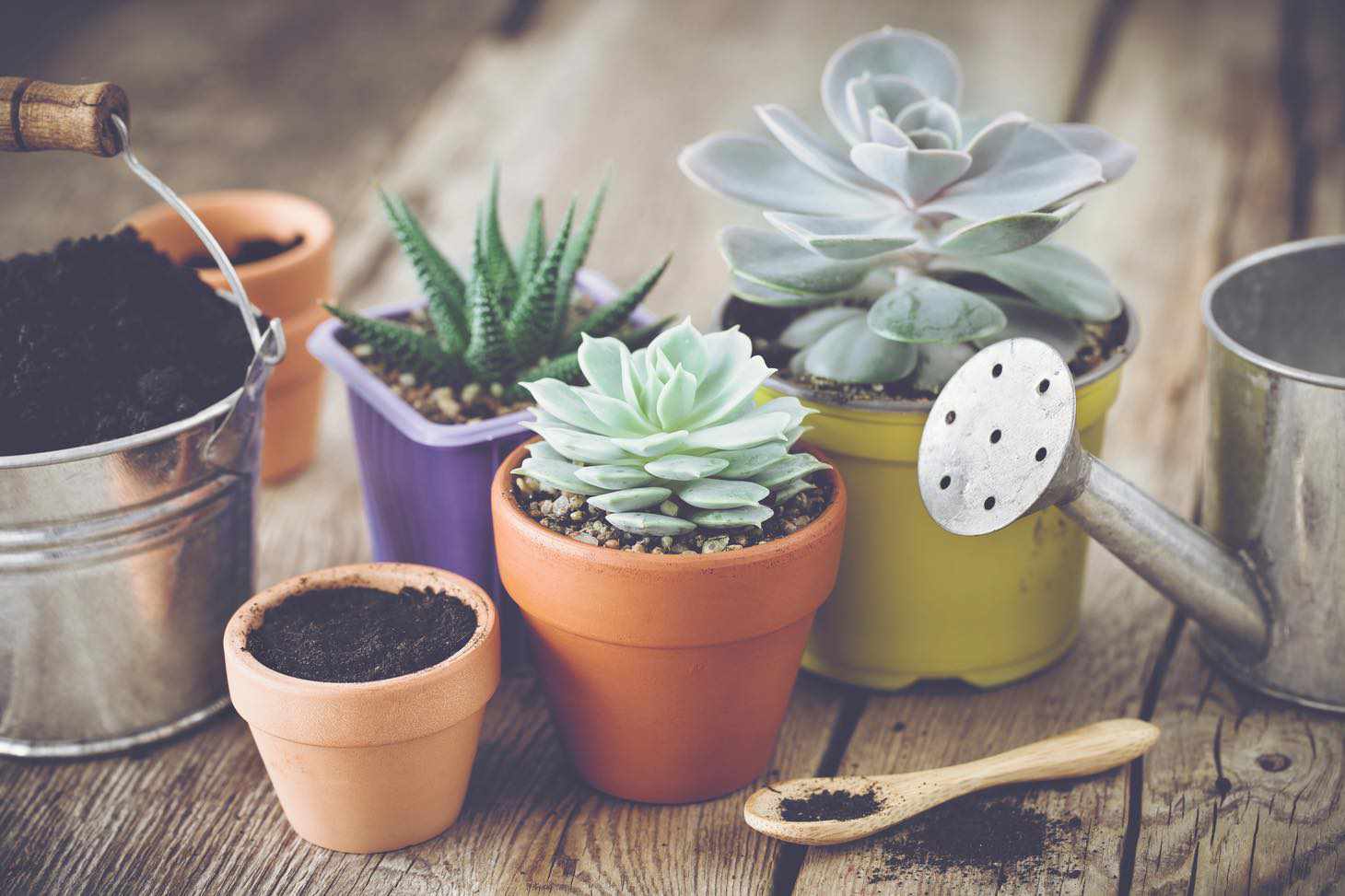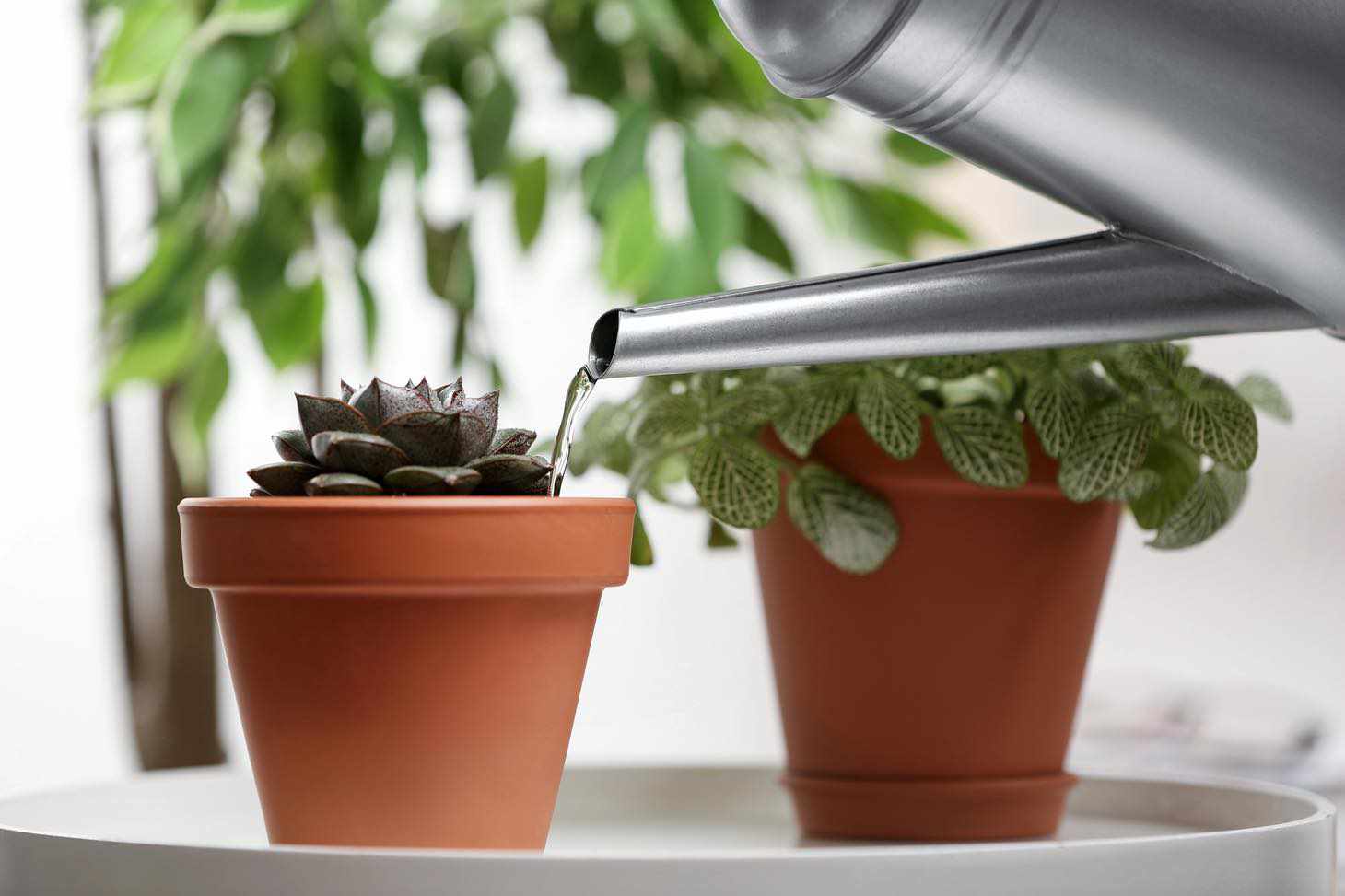How to Water Succulents
Succulents are beloved for their unique shapes and low-maintenance nature, but proper watering is crucial for their health and longevity. Many gardeners struggle with finding the right balance, often overwatering these drought-resistant plants. The key to watering succulents is to follow the “soak and dry” method, allowing the soil to dry completely between thorough waterings.

This approach mimics the natural rainfall patterns in arid regions where many succulents originate. By giving your succulents a deep drink and then letting them dry out, you encourage strong root growth and prevent issues like root rot. You’ll need to adjust your watering frequency based on factors such as climate, season, and whether your plants are indoors or outdoors.
For indoor succulents, check the soil moisture every few days by touching just beneath the surface or better yet, probing down a bit. You can stick a chopstick or something similar into the soil to see just how moist the soil is. When it feels dry, water deeply until excess drains from the pot’s bottom holes. Outdoor succulents may require more frequent watering, especially during hot summer months. Always err on the side of underwatering, as succulents can recover more easily from drought than from overwatering.
Key Takeaways
- Water succulents thoroughly when the soil is completely dry
- Use well-draining soil and pots with drainage holes for healthy succulents
- Adjust watering frequency based on season, climate, and plant location
Understanding Succulent Watering Needs

Proper watering is crucial for succulent health. Knowing when and how much to water depends on several factors and recognizing your plant’s needs.
Recognizing the Signs of Watering Needs
Watch for visual cues from your succulents. Underwatered plants often have wrinkled, shriveled leaves. The leaves may feel soft and pliable.
Overwatered succulents display yellowing, translucent leaves that feel mushy. The stem might appear swollen or discolored.
Check the soil moisture before watering. Insert your finger about an inch into the soil or use the chopstick method mentioned in the previous section. If it feels dry, it’s time to water. If it’s still moist, wait a few days.
Factors Influencing Watering Frequency
Season plays a major role in watering needs. During warmer months, water your succulents every 1-2 weeks. In cooler periods, reduce watering as plants become less active. (any advice like this is just a rule of thumb…you have to get to know your plants by paying attention to them and noting how they respond to your chosen interval of watering)
Of course climate and environment affect watering frequency. Hot, dry conditions increase water needs. High humidity reduces watering requirements.
Pot size and material impact moisture retention. Larger pots hold moisture longer. Porous materials like terracotta dry out faster than plastic.
Sunlight exposure influences water consumption. Plants in bright light typically need more frequent watering than those in shadier spots…well duh!
Proper Watering Techniques for Succulents

Watering succulents correctly is crucial for their health and growth. The soak-and-dry method and choosing between bottom and top watering are key techniques to master.
Soak-and-Dry Method Explained
The soak-and-dry method is ideal for most succulents. Water your plants thoroughly until water flows from the drainage holes. Allow the soil to dry completely between waterings.
During active growth seasons, water every 1-2 weeks. Reduce frequency in cooler months when plants are dormant. Use a moisture meter or lift the pot to check soil moisture.
Avoid overwatering, as it can lead to root rot. If leaves appear puffy or translucent, you’re likely giving too much water. Wrinkled leaves often indicate underwatering.
Bottom Watering Versus Top Watering
Bottom watering involves placing your succulent pot in a saucer of water. The soil absorbs moisture through the drainage holes, encouraging deep root growth.
Let the pot sit in water for 10-15 minutes, then remove it. This method reduces the risk of water sitting on leaves, which can in some cases cause problems.
Top watering mimics natural rainfall. Direct water at the soil, avoiding leaves. Use a watering can with a narrow spout for precision. This method allows you to flush out accumulated salts.
Bottom watering is definitely less risky because you are not flooding the top surface or getting the leaves wet, but you need the space and plenty of extra time to water this way. It’s easy to end up with a kitchen sink full of plants that have to remain there for a while. Ask me how I know 😉
Selecting the Right Soil and Pot for Succulents

Proper soil and containers are crucial for succulent health. The right combination allows for optimal water drainage and root aeration.
Importance of Well-Draining Soil
Succulents thrive in well-draining soil that prevents water from pooling around their roots. Use a specialized succulent mix to ensure that your succulents are not sitting in water for long periods of time.
Avoid using regular garden soil, as it’s too heavy and holds excess water. Overly moist soil can lead to root rot, a common problem for succulents. Not only that but outdoor soil is generally loaded with bugs and bugs waiting to hatch. You are just asking for trouble if you ask me. Invest in a quality, high-draining soil designed for succulents.
Choosing Containers with Proper Drainage
Select pots with drainage holes to prevent water from accumulating at the bottom. This feature is essential for succulent health and longevity.
If you find a decorative pot without holes, you could drill some holes yourself or use it as a cachepot. Place your succulent in a plain pot with drainage holes, then set it inside the decorative container.
Choose pots made from porous materials like terracotta or unglazed ceramic. These allow excess moisture to evaporate through the sides. Plastic or glazed pots can work too, but require more careful watering.
Size matters – pick a pot that’s only slightly larger than your succulent’s root system. Too much extra space can lead to soil staying wet for too long.
I would avoid those pots that have the tray attached to the bottom of the pot. Even though they have an integrated drainage hole I have found that it clogs up easily and doesn’t allow the water to drain nearly as well as a regular planter pot without the attached tray/saucer.
Maintaining Healthy Succulents Year-Round

Proper care ensures your succulents thrive in every season. Adapting your watering routine and monitoring for potential issues are key to long-term succulent health.
Adjusting Care with Seasonal Changes
In summer, water succulents more frequently as they actively grow. Check soil moisture every 1-2 weeks. Water thoroughly when the soil is completely dry.
During winter, reduce watering significantly. Most succulents enter dormancy and require less moisture. Water only when the soil has been dry for several weeks.
Provide bright, indirect light year-round. In summer, protect succulents from intense afternoon sun to prevent leaf burn. In winter, move plants closer to windows to maximize light exposure.
Adjust fertilizing habits seasonally. Feed succulents with a balanced, diluted fertilizer monthly during the growing season. Stop fertilizing in late fall and winter when growth slows.

Identifying and Preventing Common Problems
Watch for signs of overwatering, the most common succulent issue. Soft, mushy leaves indicate excess moisture. Reduce watering immediately if you notice these symptoms.
Prevent root rot by using well-draining soil and pots with drainage holes. Never let succulents sit in standing water.
Shriveling or crispy leaves often signal underwatering. Increase watering frequency if you notice these signs, especially during hot weather.
Inspect plants regularly for pests like mealybugs or spider mites. Treat infestations promptly with insecticidal soap or neem oil.
To prevent fungal infections, ensure good air circulation around your plants. Avoid misting succulents or getting water on their leaves.
Different types of succulents may have specific care needs. Research your particular varieties to provide optimal conditions.
